In recent years, the Eliteserien, one of the most interesting tournaments in Scandinavia due to the amount of young talent and variety of playing philosophies, has been dominated by Molde FK and FK Bodø/Glimt. When one wins, the other takes second place.
However, this year, that could change: Morten Jensen and Bjarte Lunde Aarsheim’s Viking FK, a team with a squad valued at less than half of what Kjetil Knutsen’s team is valued at, have the same points as FK Bodø/Glimt after 19 matches.
Despite a well-deserved third-place finish in 2021, the Stavanger side failed to excel in 2022, finishing eleventh after 13 defeats, eight draws and nine wins in the season. However, this year, with 11 games to go, they have even beaten last year’s points tally (35), amassing 44 points, and all signs suggest that they will continue to add to their record.
Jensen and Aarsheim’s tactical approach is generating more and more interest in the football world, especially for what they have developed in the current season, where many players will surely benefit from moves to better clubs in the short term.
The team last won a Norwegian Premier League title in 1991, when the tournament was called ‘Tippeligaen’ and the country’s football was very different from today.
For this reason, in tactical analysis format, this is an analysis of Morte Jensen and Bjarte Lunde Aarsheim’s Viking FK to determine what have been the keys that have led the team to compete at the top of the Eliteserien with a well-developed playing identity adopted to exploit the strengths of the players in the squad.
Defensive block coordination
The first and great virtue of Jensen and Aarsheim’s Viking FK is the balance of the defensive block based on the coordination of the lines. In this way, they are a very organised team with a high or mid-low block, knowing how to regulate their aggressiveness to steal the ball or prioritise the control of players in half-spaces while delaying opposing attacks.
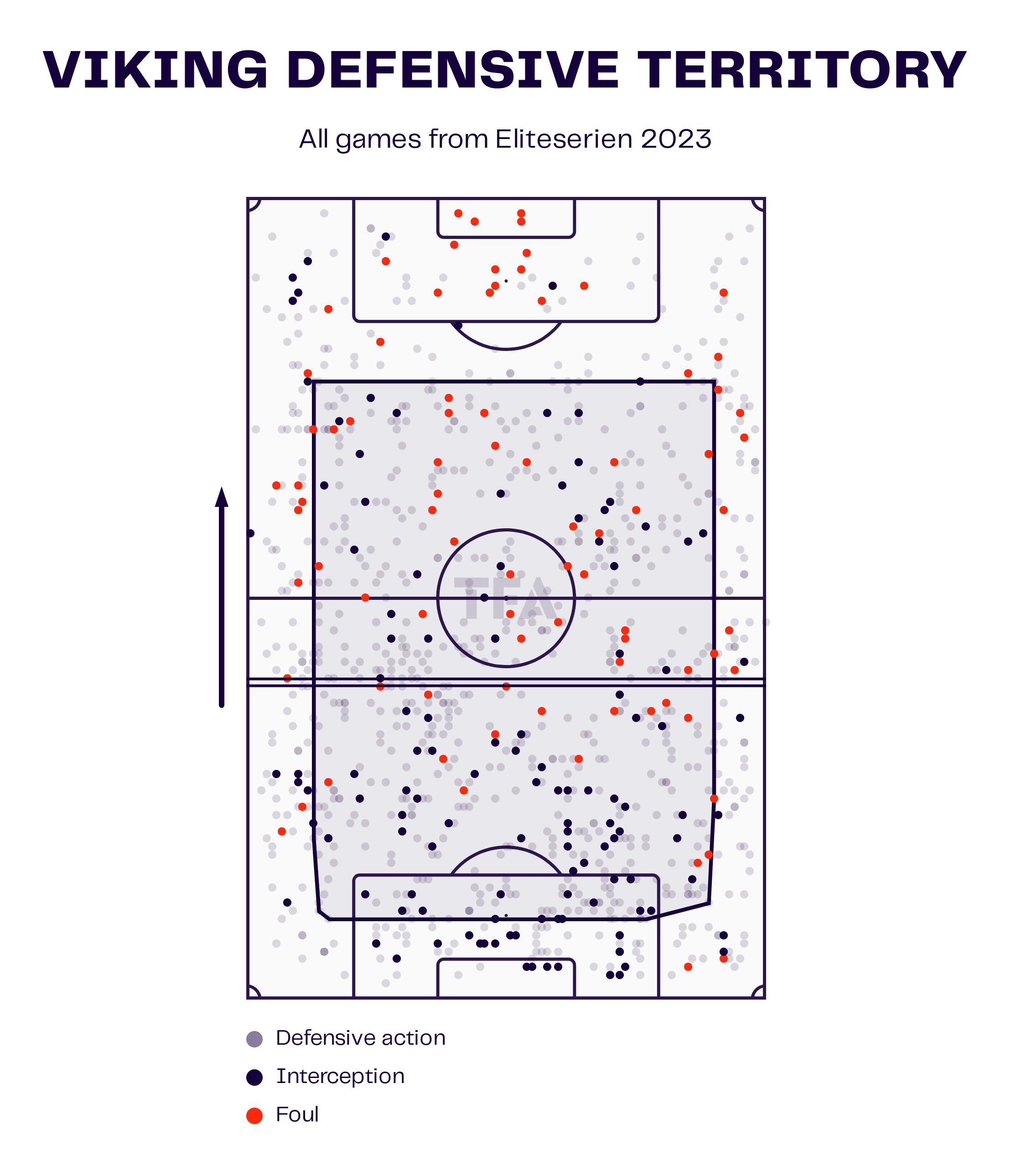
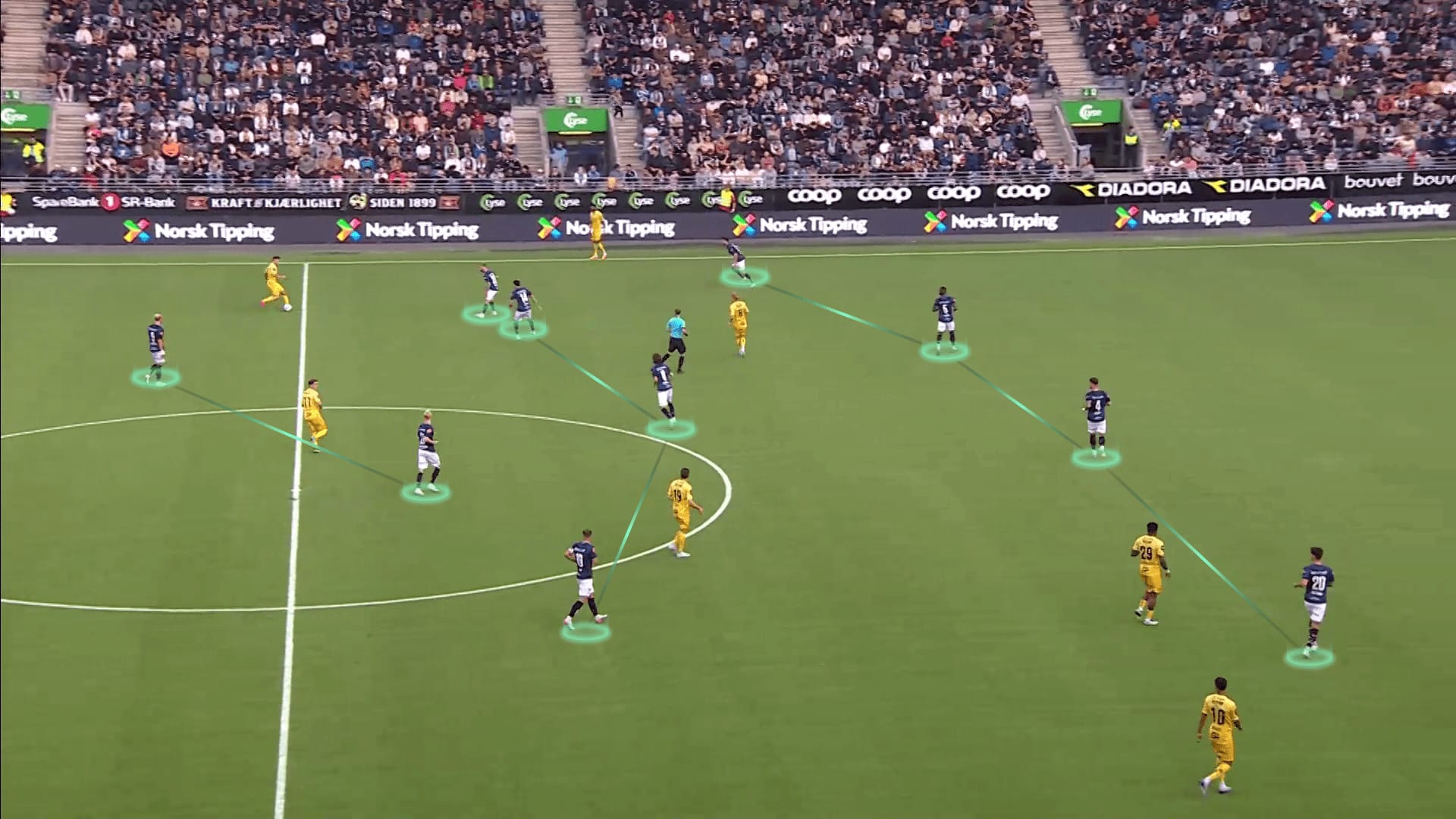
The block can defend at different heights, prioritising the short distance between lines to prevent the opponent from receiving inside and turning or progressing with ease, and the same approach in all players — in this way, through very coordinated movements, they can make defensive coverages or come out of the zone to press.
In this sense, Markus Solbakken (#8) is a crucial figure in the team playing as DM, excelling from his IQ and good reading of situations to position himself.
For most of the season, Viking FK have used a 4-3-3 system in which he is mainly in charge of leading/coordinating the midfield, always prioritising keeping the block balanced and taking care of the CMs’ backs.
He is a player who can win duels and anticipate passes on several occasions. However, he prevents many more attacks just by controlling potential receivers in half-spaces.
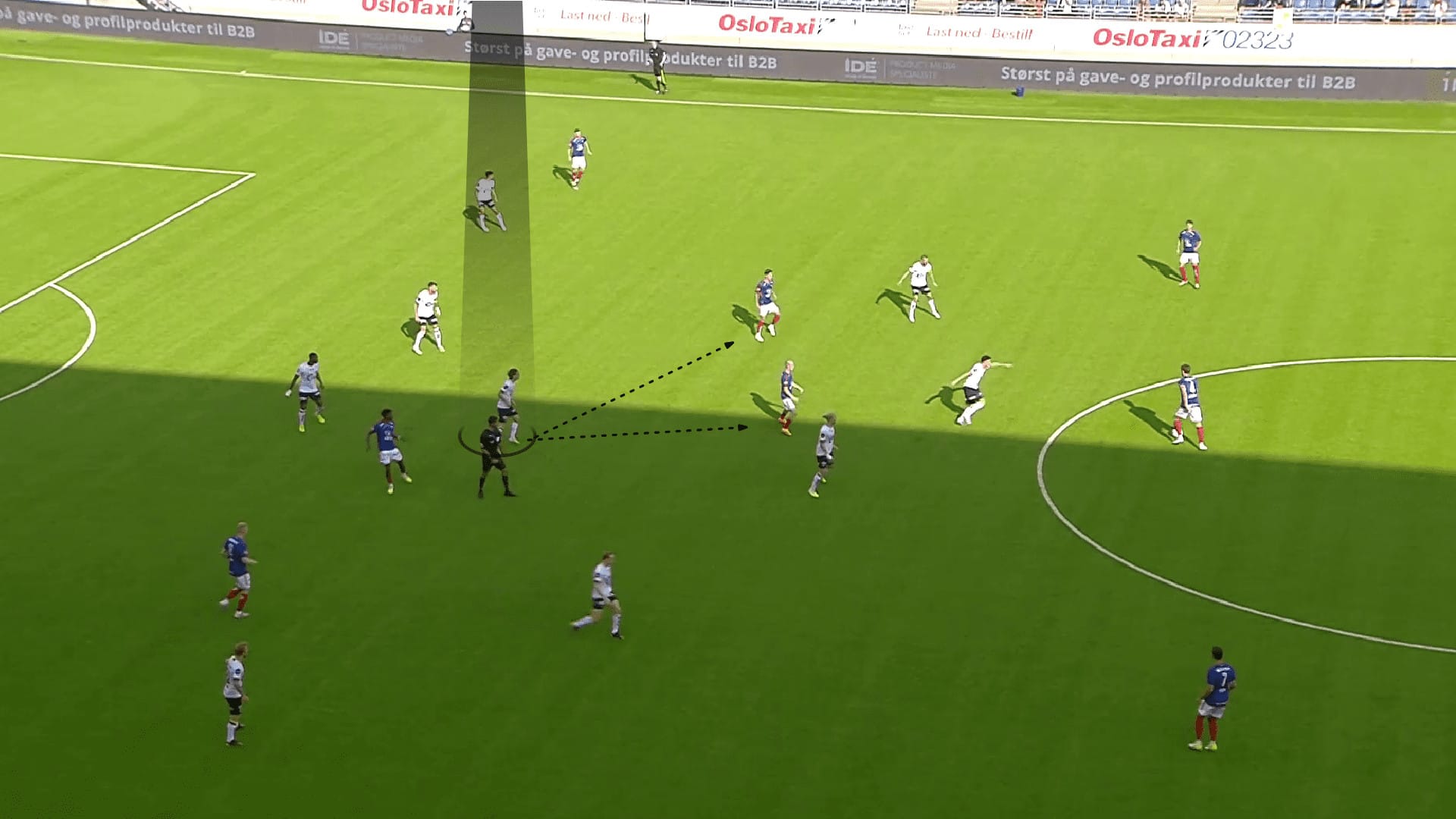
Being such a coordinated team capable of defending at different heights has allowed Viking FK to adapt very well to their opponents throughout the season, being more or less aggressive depending on the rival’s approach in possession.
In this sense, against teams like Molde FK or FK FK Bodø/Glimt, very dynamic and dominant in possession, they have dominated different moments to defend high, in a mid-block and even low with a lot of coherence and solidity in their plan.
However, what Erling Moe’s Molde FK took advantage of during the match played last June and that Viking FK’s mid-low block could counter were the long and diagonal balls from centre-backs to wing-backs or wide attackers.
At times, the team is too narrow to maintain a compact block and control receivers in half-spaces, but it gives enough time-space to wide players, who can progress or directly dynamise attacks from there.
High defence and pressure traps
Viking FK is not one of the most aggressive teams in the Eliteserien when pressing or defending high. Still, because of the coordination of the defensive block and the energy of their attackers, they are dominant in their high pressing, especially as the aim is only sometimes to steal. Still, they can force mistakes or long balls to regain possession. They usually prepare well for both scenarios and are successful in this respect.
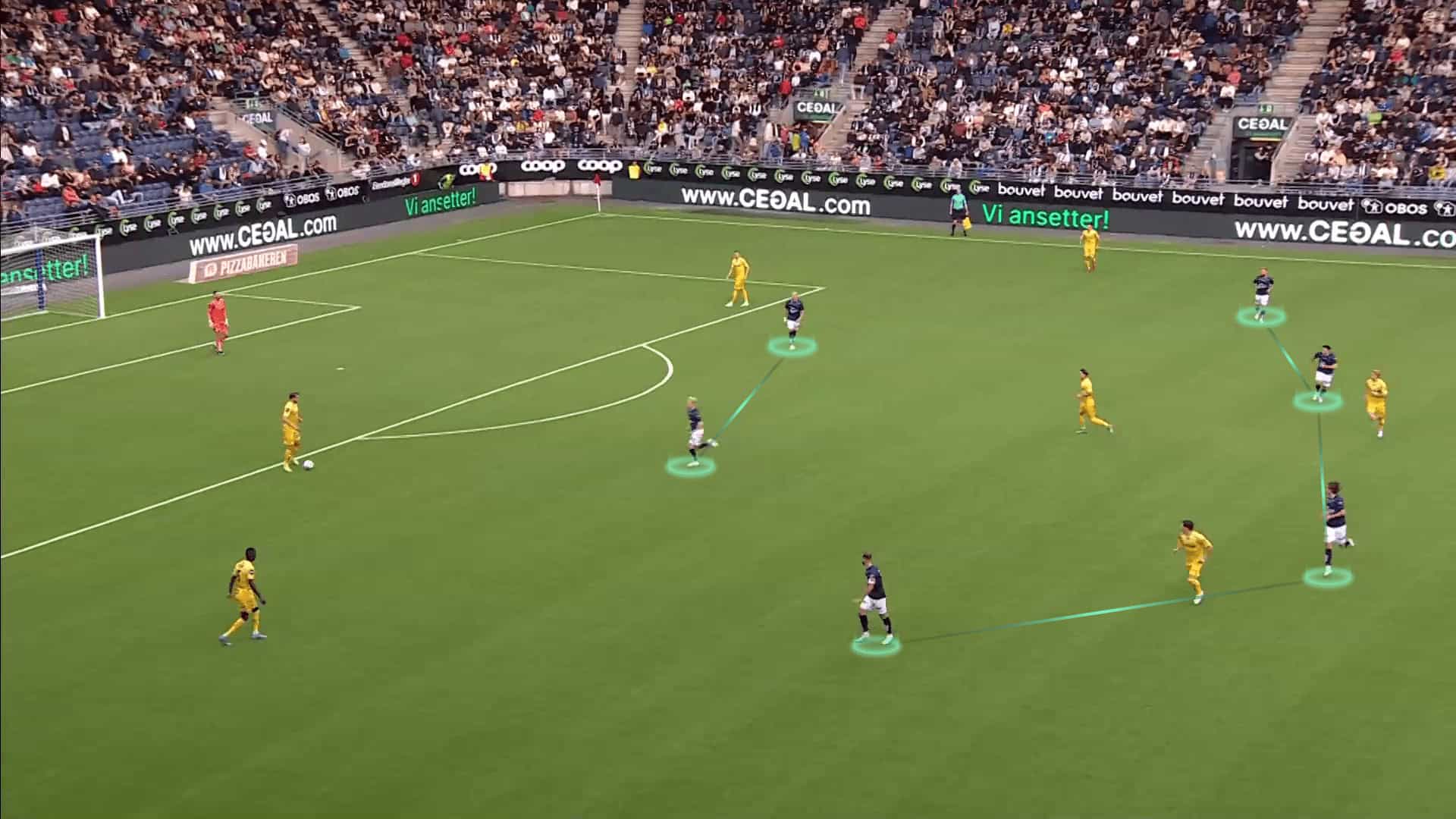
They are a team that can do very intense man-marking, but they also use pressure traps on many occasions to allow the opposition to connect with a centre-back, full-back or even DM/deep playmaker, seemingly with time-space and then steal the ball there.
Also, keeping a very balanced midfield means the team don’t have to be too intense/fast through the player pressing the receiver, as the player is often limited in progressing and even restarting the play on several occasions.
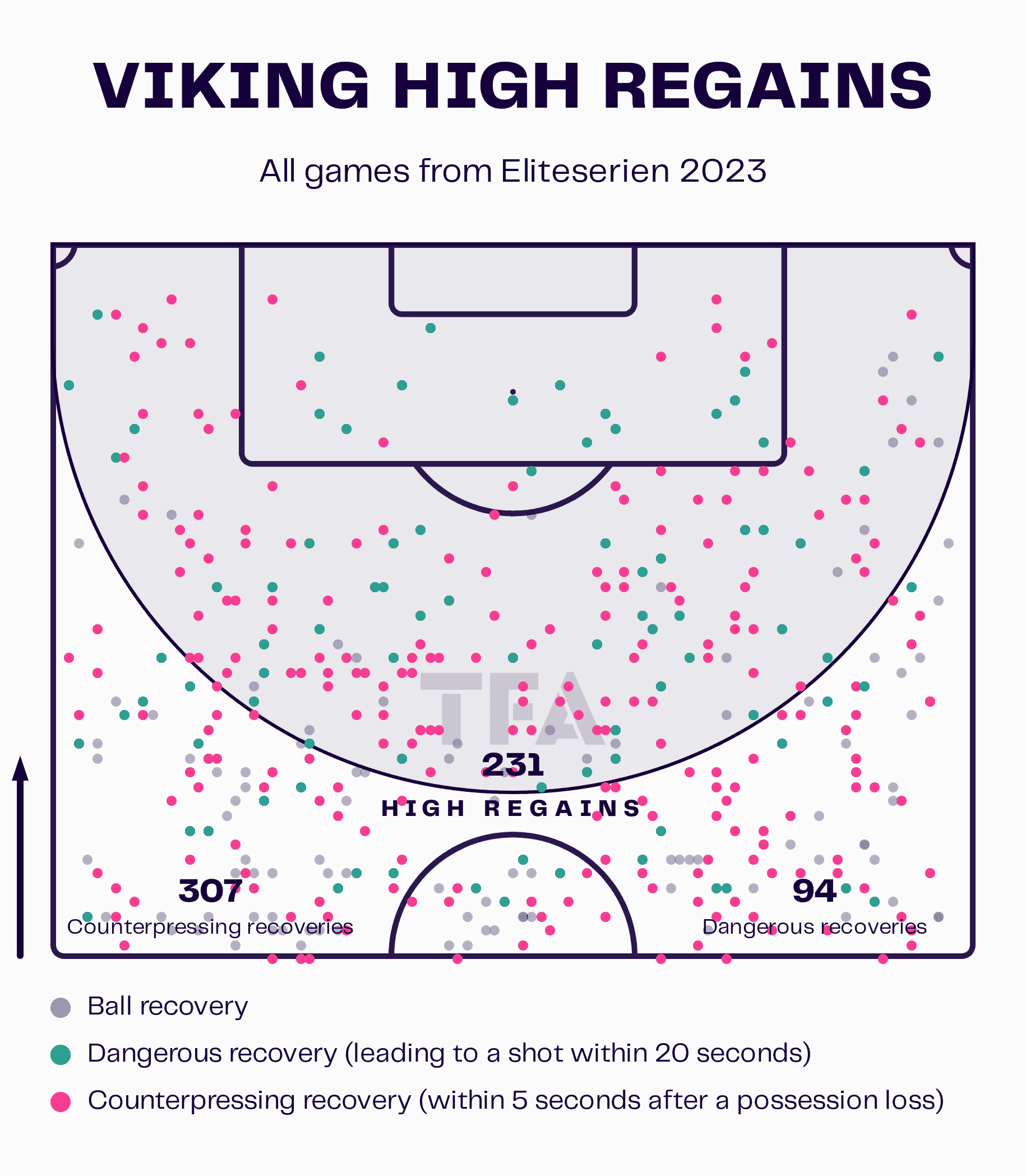
Moreover, one of the keys to pressing differs from what happens in the front line but in the back line. As the team is not always looking to steal but also to force mistakes or long passes, the defensive line must be prepared to win aerial duels and impose themselves on their opponents, just as the midfield, after advancing metres to press, must drop back to be close to the centre-backs and control the second plays.
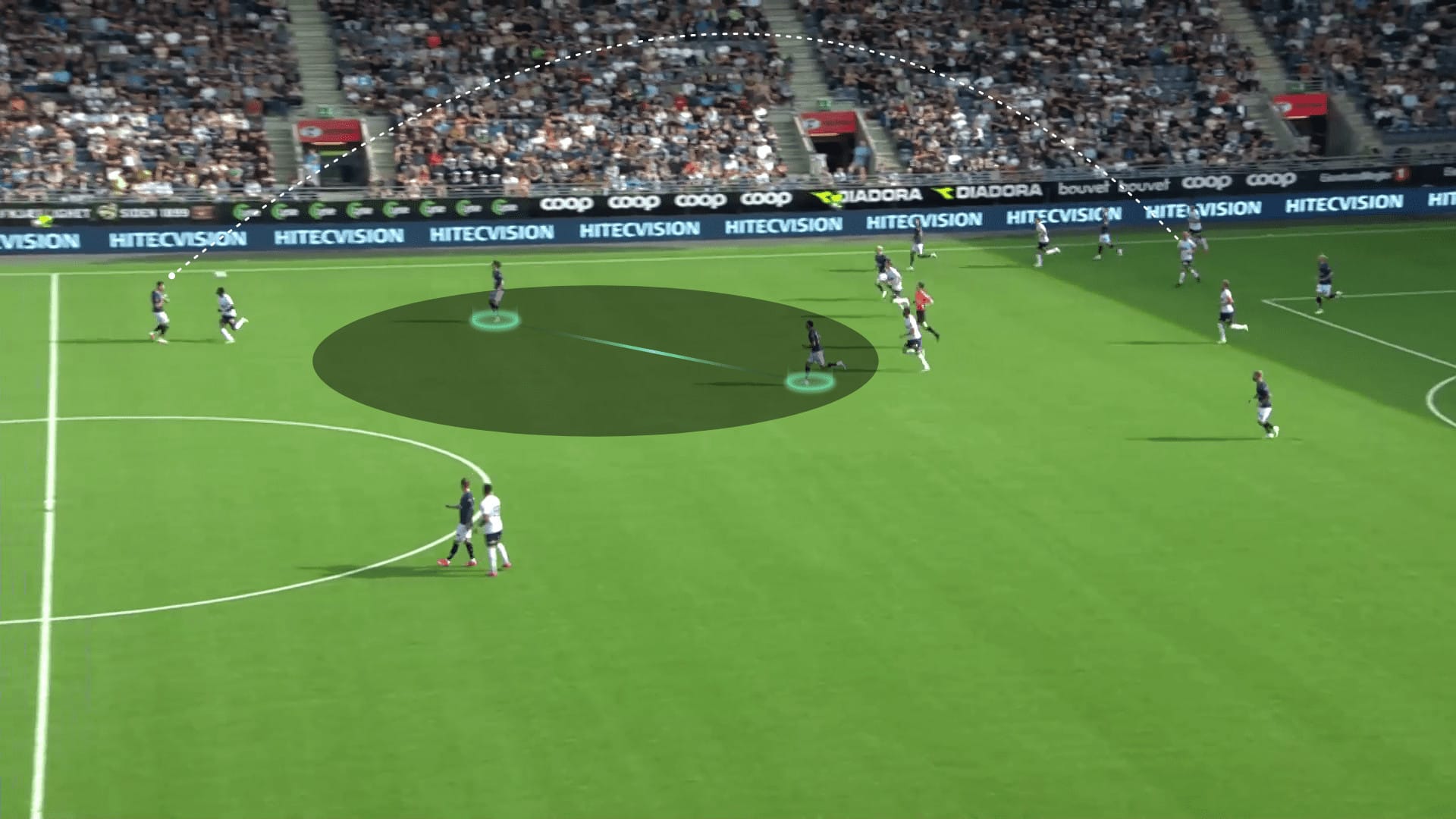
The team has an excellent structure to protect losses and win second balls, in addition to centre-backs who are dominant in the air and have the composure to progress through their passes if they dominate the ball.
Dynamics to occupy half-spaces
Morten Jensen and Bjarte Lunde Aarsheim have focused on developing possession patterns to conquer half-spaces and dynamise attacks from there. To do this, they not only have centre-backs + DM/distributor with an excellent passing range to break through the opposition block through small gaps but also smart players to get behind the opposition and the agility to receive/pass/carry the ball between the lines, as well as an ideal structure to get into these spaces.
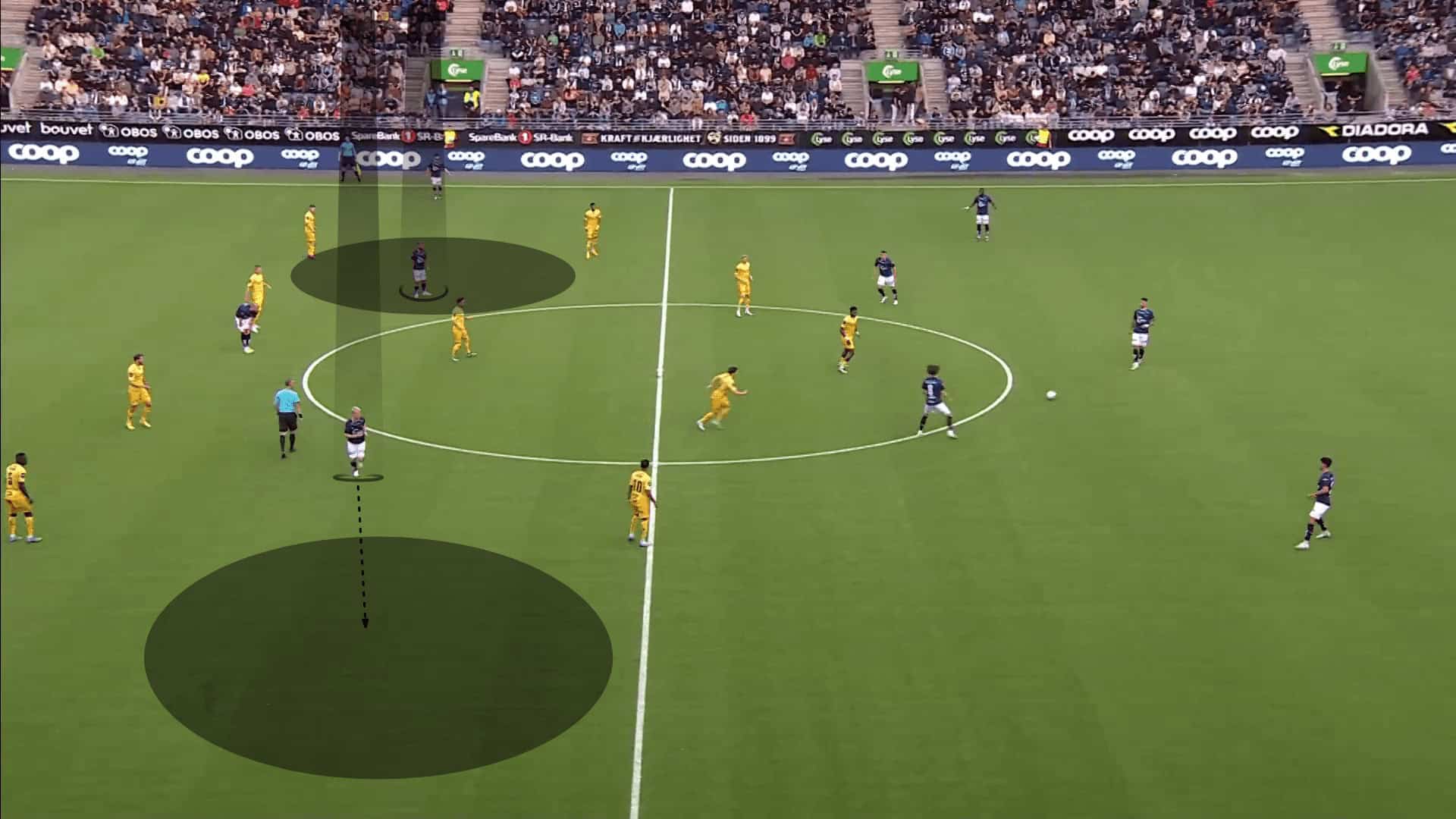
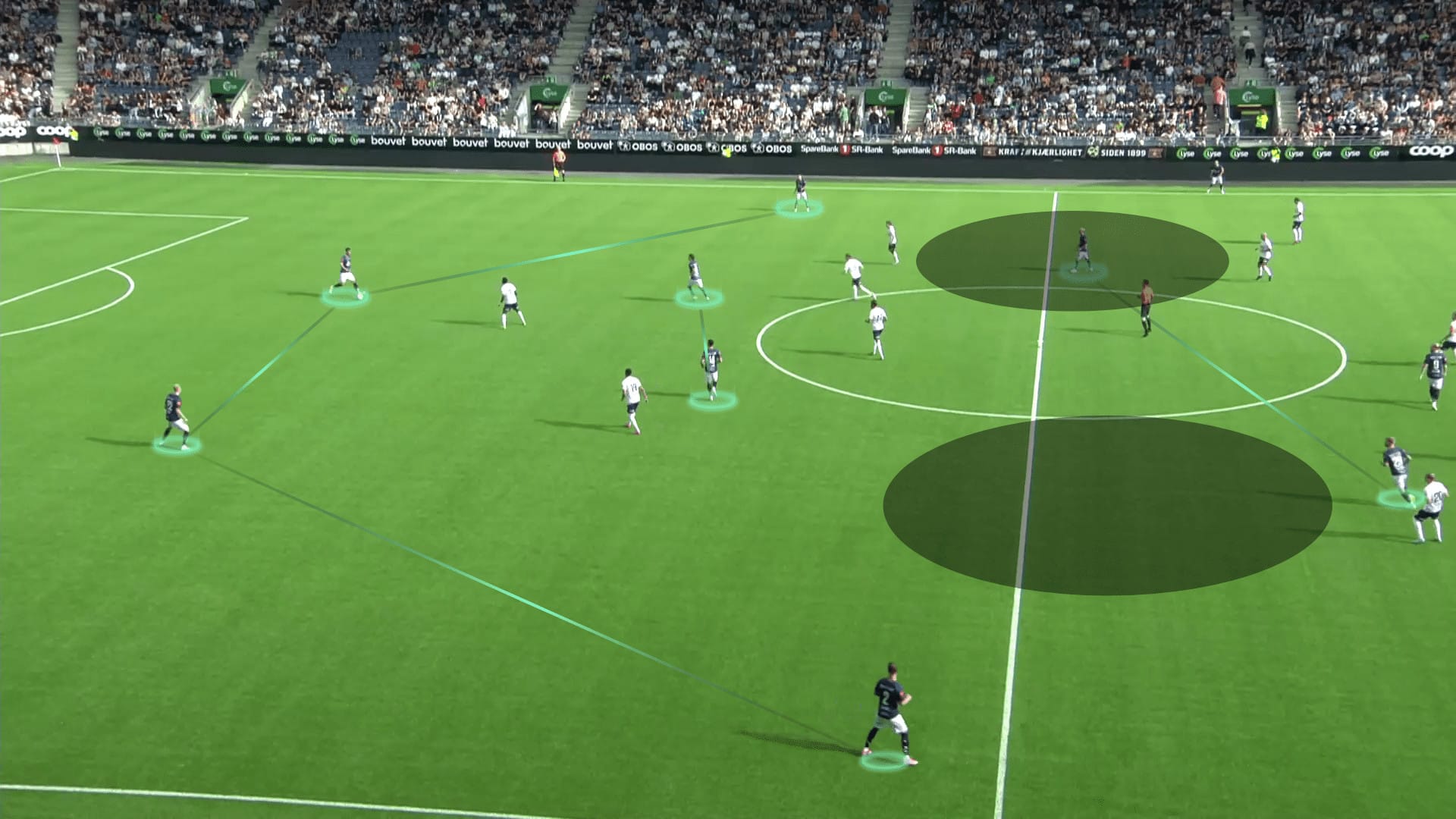
In this sense, always having players close to the touchline is vital for the opposition block to expand and create more space on the inside. If the opposition is very compact, Viking can advance on the outside with space; otherwise, there will be plenty of room to play from the inside, which is most beneficial for a team with such agile players for receiving and passing and powerful attackers for unmarked moves, especially Lars-Jørgen Salvesen.
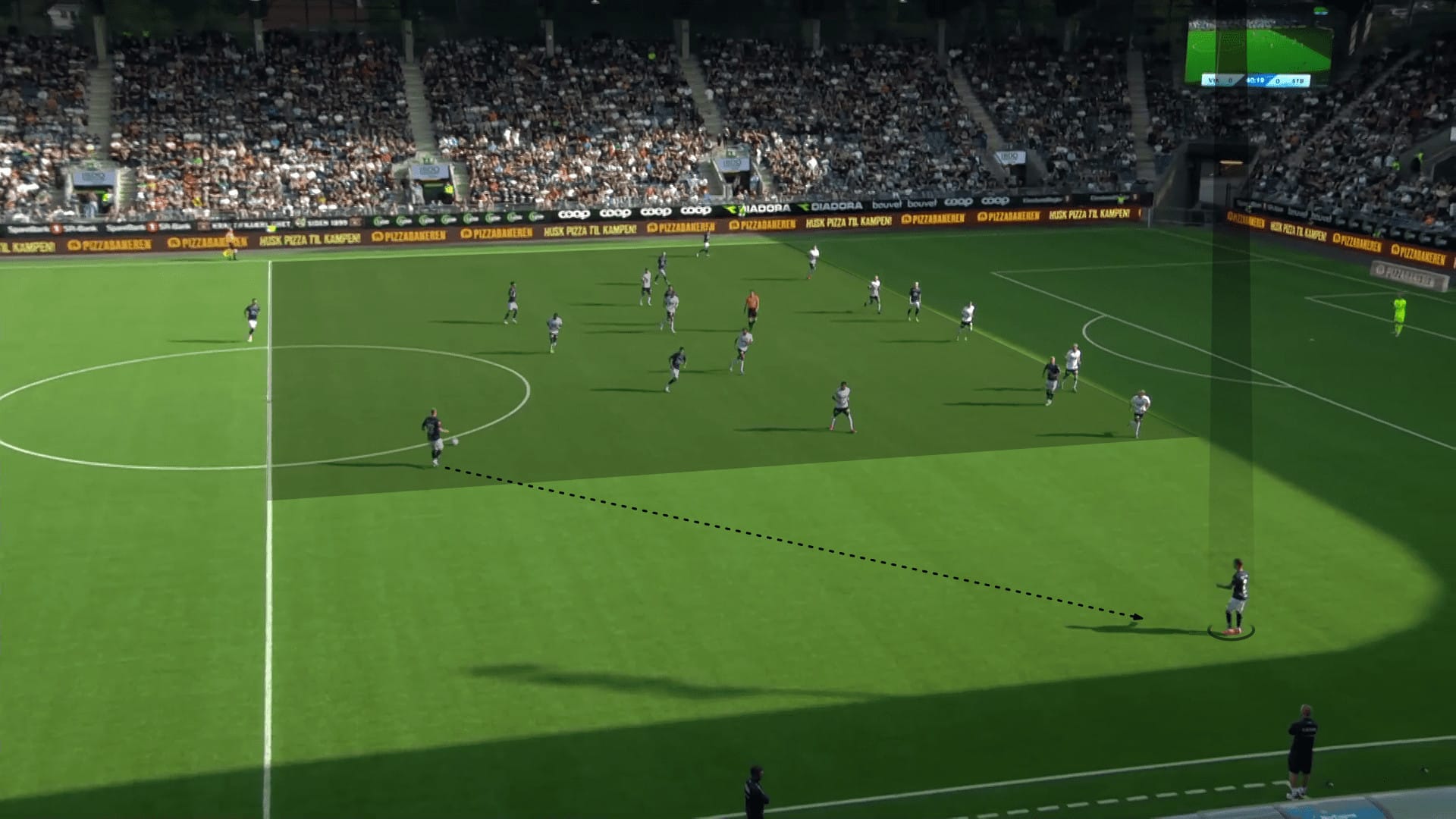
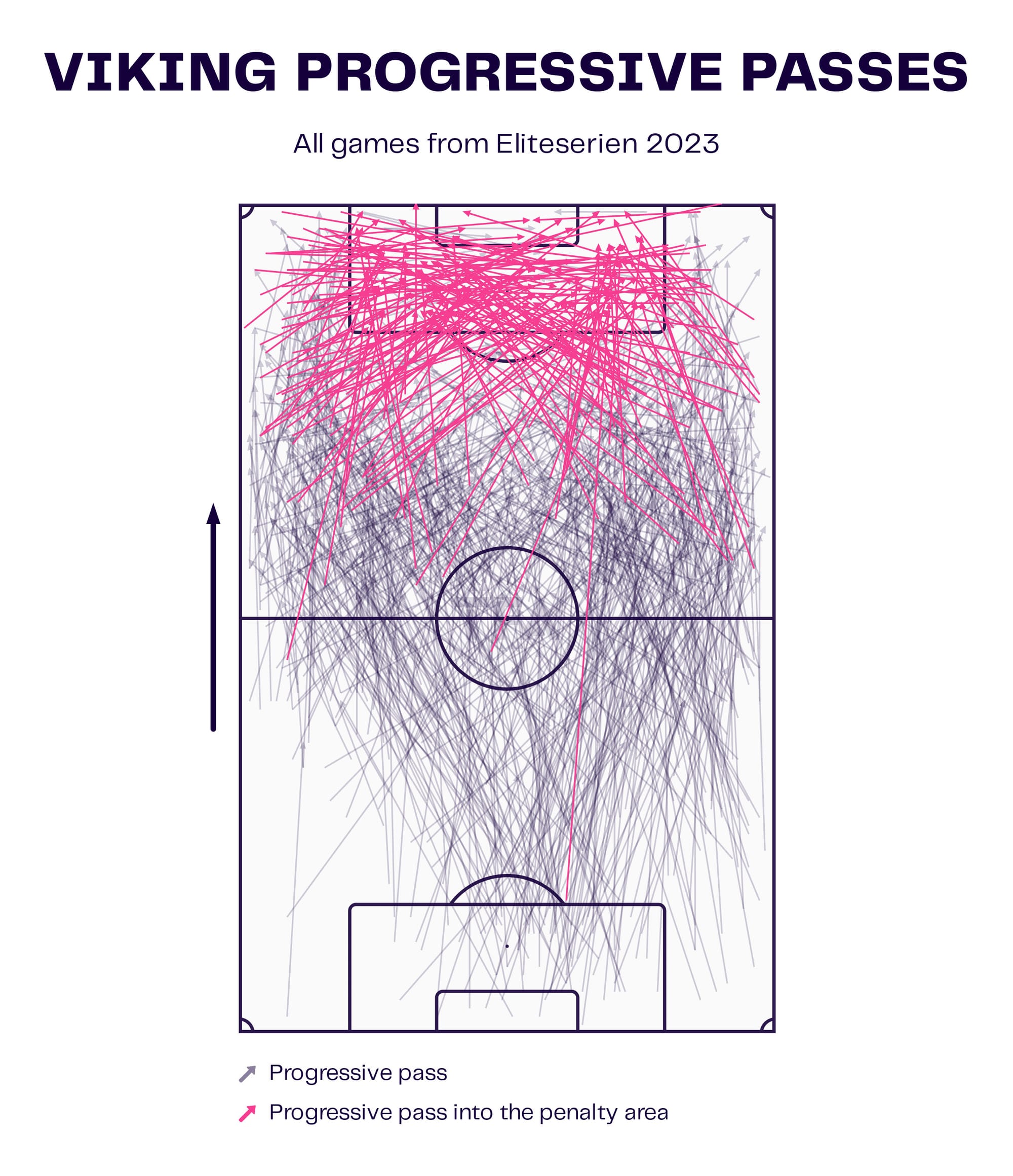
When attacking a mid-low block, both premises are visible in the team: presence in half-spaces + permanent width through full-backs or wingers. The team prioritises a rational occupation of space to have different ways to create scoring opportunities. However, throughout the season, they have faced very compact opponents, making it difficult for Viking FK to get into the box.
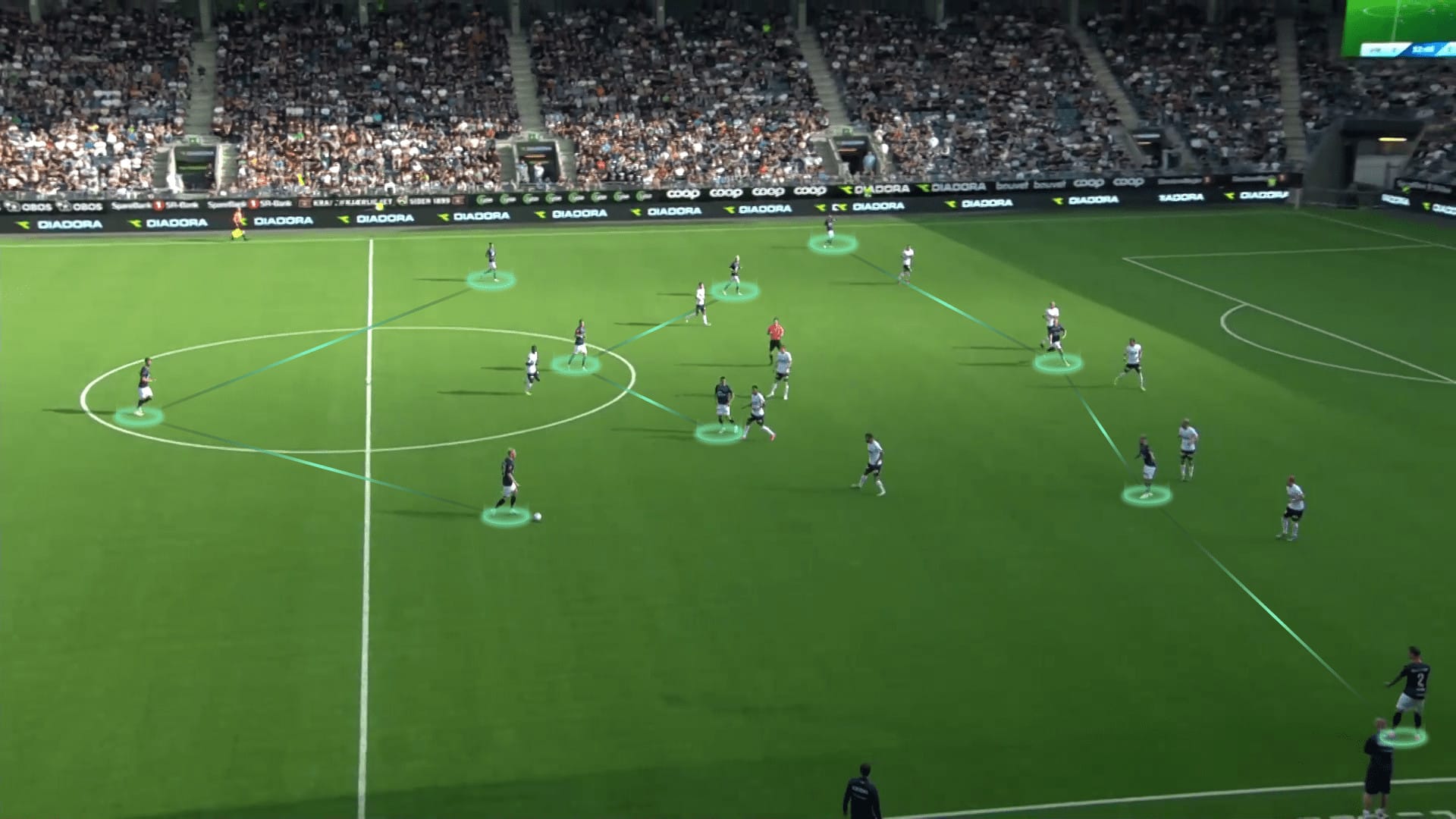
It is a team that could gain much more from dynamic restarts and quicker ball circulation to create space on the inside. Due to the good passing range of centre-backs, especially David Brekalo and Marlus Solbakken, the team is insistent on breaking opposition lines through vertical passing. However, being more dominant with the tempo of the game, creating space to facilitate the reception of the team-mate and choosing better moments to give the progressive pass could allow the team to be much more effective in their positional attacks.
Viking FK is a much more effective team when pressed high, as they have even developed good dynamics to attract pressure, widen the spaces in the opposing block, and progress. The conquest of half-spaces often starts from the build-up phase, where the team has very good automatisms to break the first line of pressure and allow different players to exploit their passing range to progress.
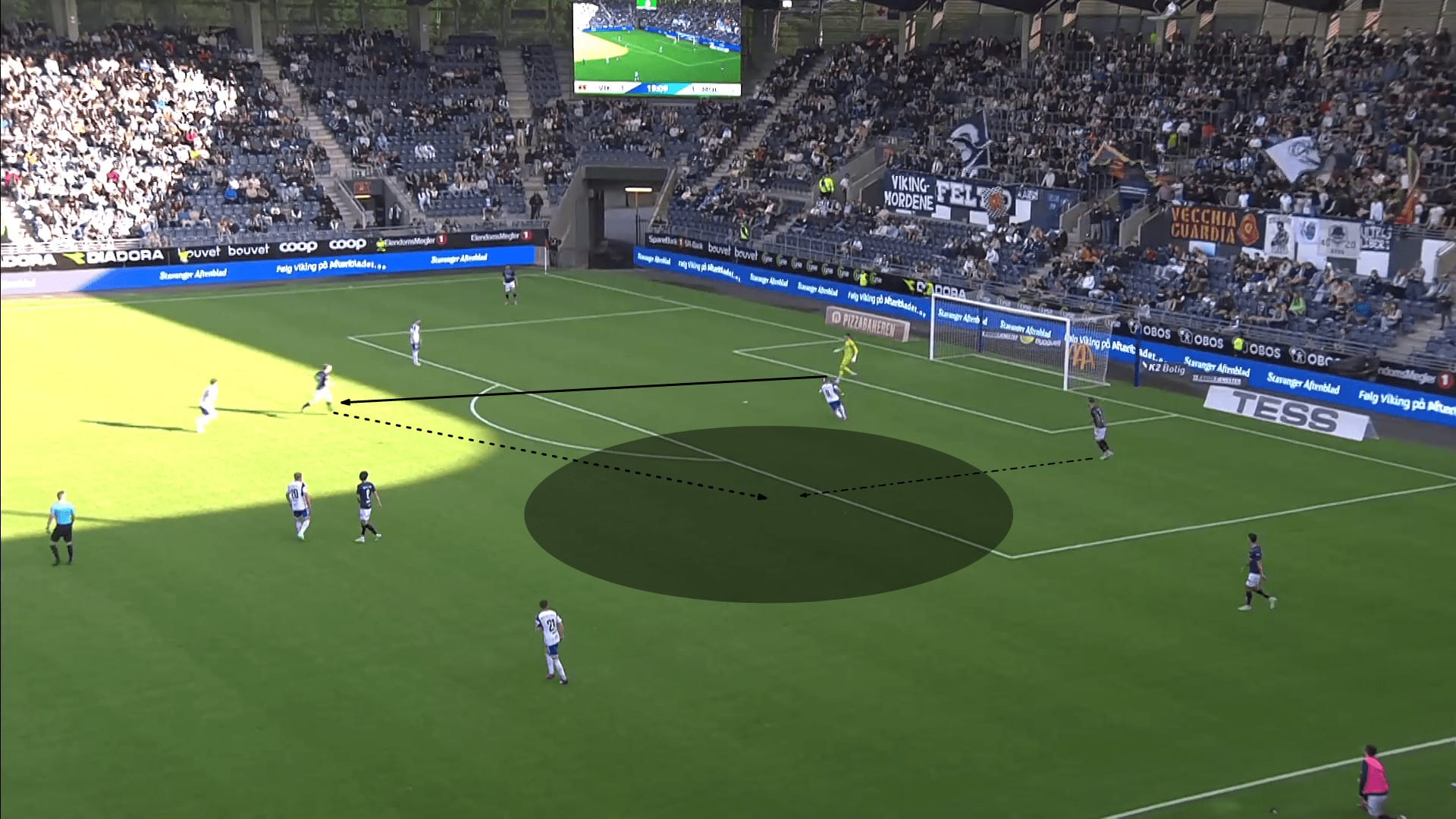
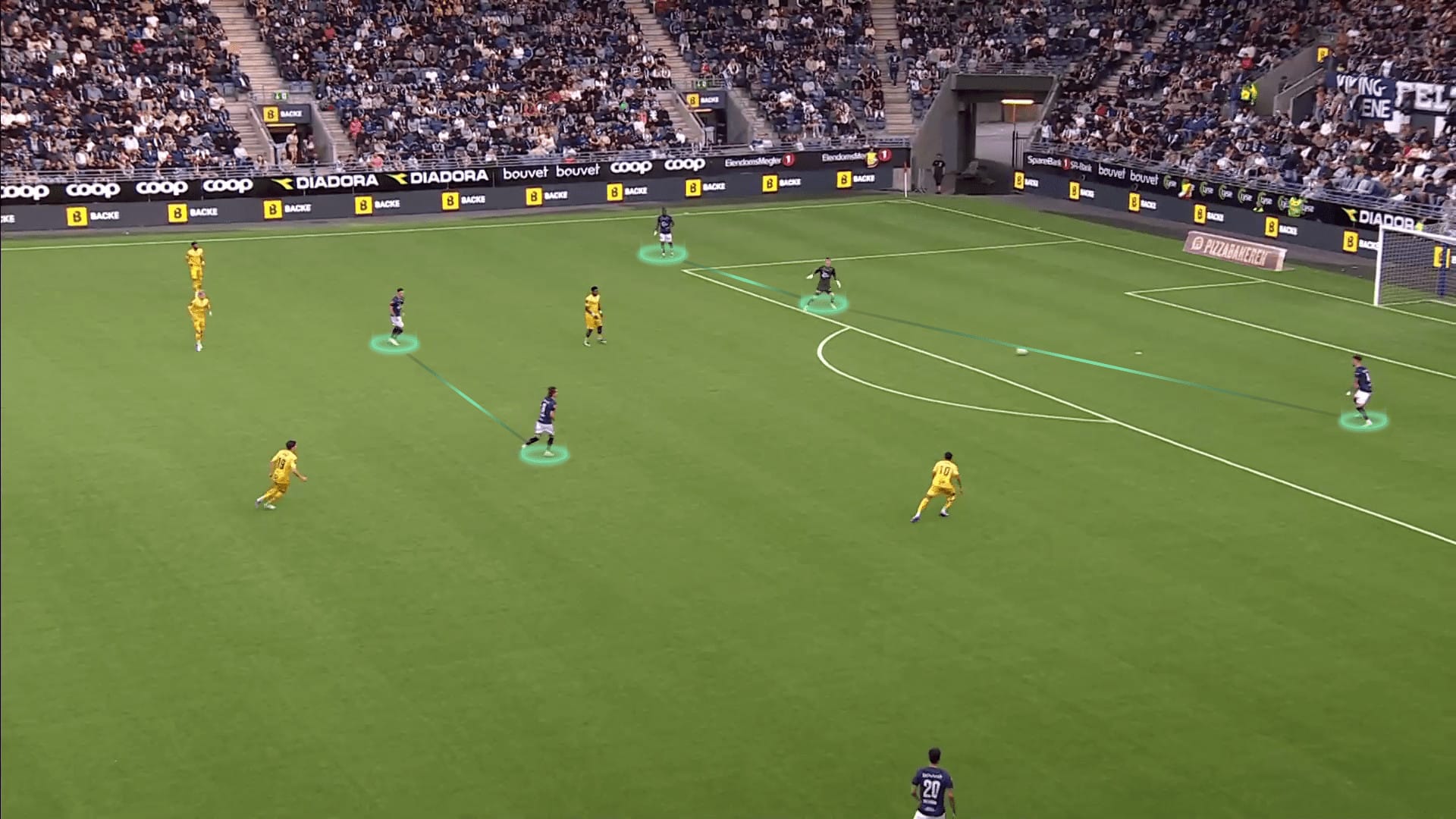
Morten Jensen and Bjarte Lunde Aarsheim’s team has developed excellent dynamics of progression by developing ideal tactical contexts to exploit the virtues of many of their players. And this is something that has allowed them to beat many more or less aggressive defensive ideas throughout the season.
Harald Tangen’s roles
A team competing for first place in the Eliteserien is made up of many players who stand out for the work they do, but one of the most valuable to highlight is Harald Tangen, a CM8 brilliant at playing in half-spaces and energising his team’s attacks through his mobility and associative intentions.
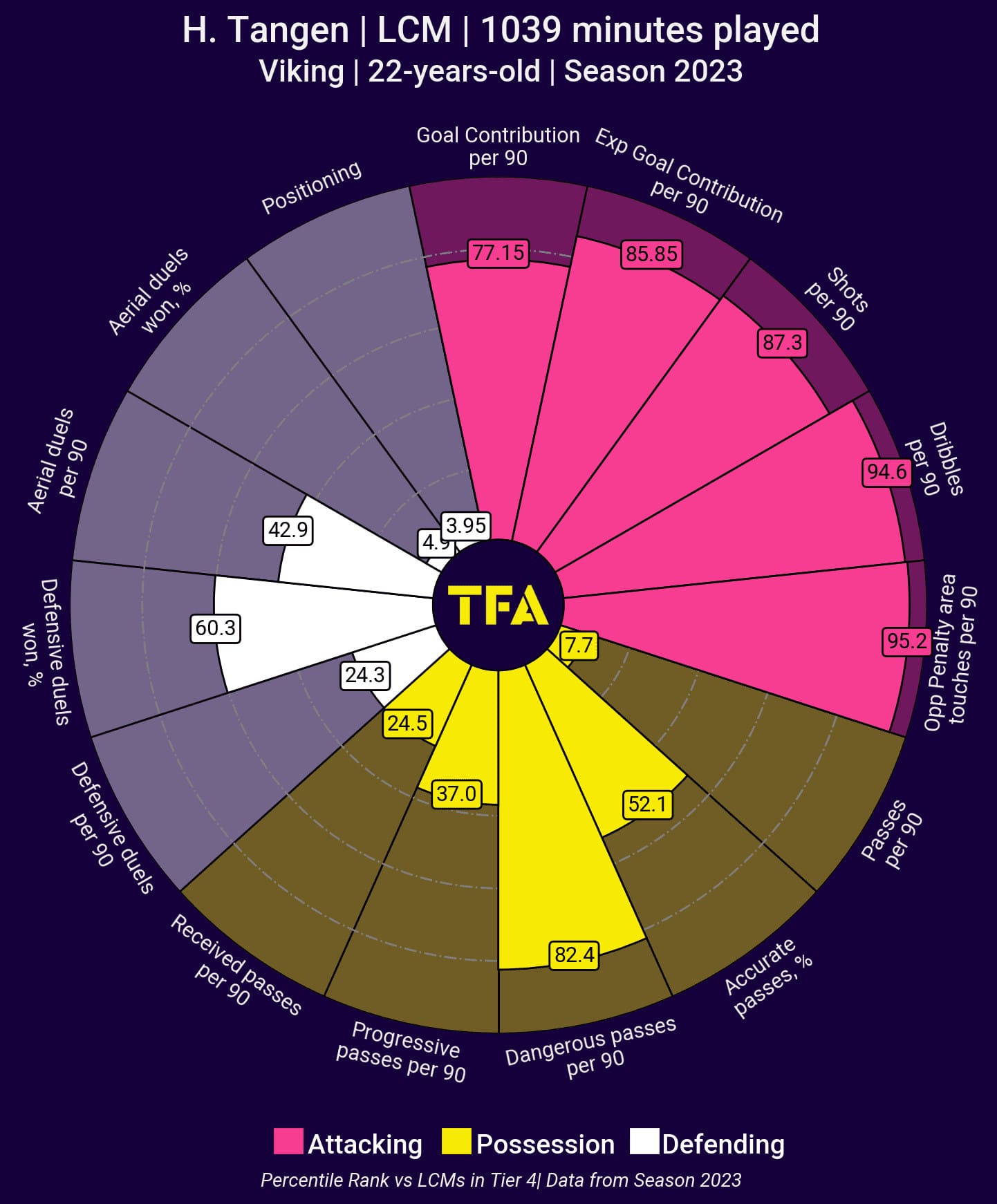
In Viking FK’s playing philosophy, he is an ideal profile to be activated through third-man dynamics to carry the ball and give intelligent passes to the attackers or simply connect with wide options to attack the box.
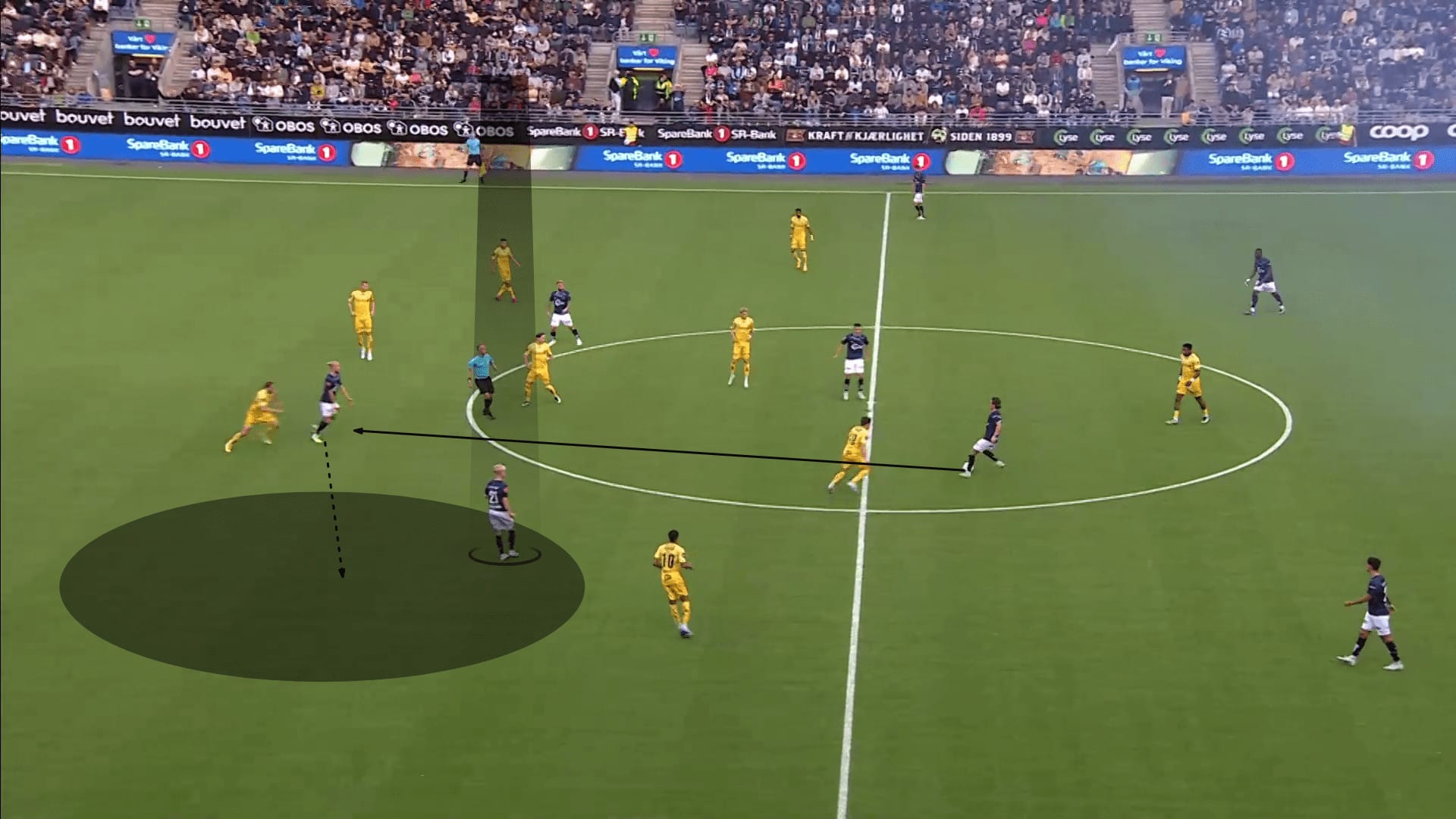
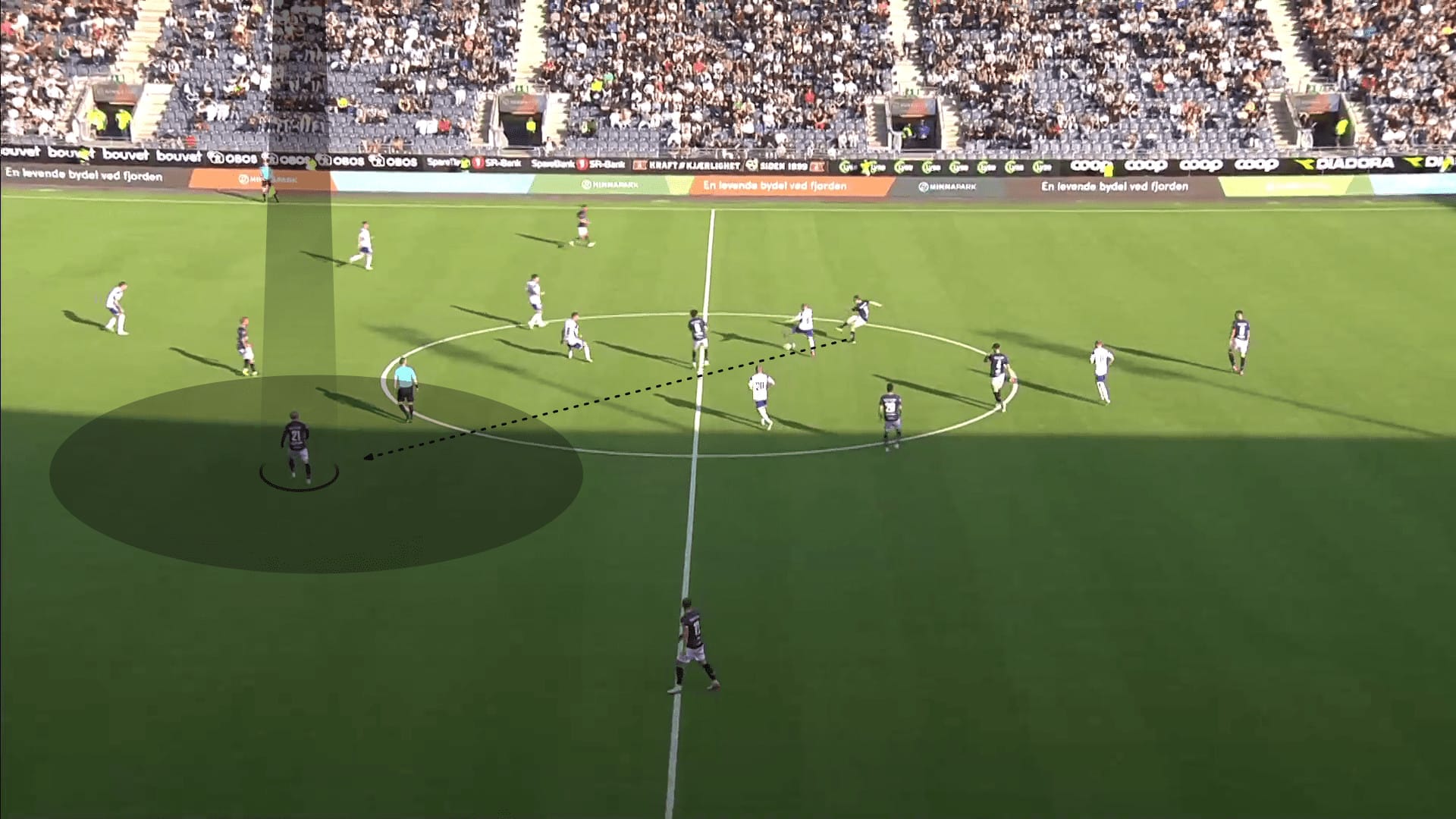
His game consists of a lot of agility and an excellent technical level to control the ball in tight spaces, but he is also a top decision-maker to dynamise his team’s attacks. He is as intense as he is intelligent in exploiting space on the inside, which allows him to be a key player in the system.
Conclusion
No matter the competition, a team on a 10-match winning streak always impresses. And this is something that Viking FK have achieved in their last matches, showing a level that makes them a serious contender to win the Norwegian Top Division title for the first time in more than 30 years. However, it will be a challenging race against FK Bodø/Glimt. This club has shone in the Eliteserien recently and even made a very good impression on the international stage recently.
The fact is that Morten Jensen and Bjarte Lunde Aarsheim are going the correct route to compete at the top of the Eliteserien. There are still several key games to go before the big goal, but there is no doubt that their capabilities have enabled the team to progress as they have.
Viking FK still have room for improvement overall, and this is positive news – they have yet to reach their ceiling on a tactical level and can be even more dominant in the short term.





Comments